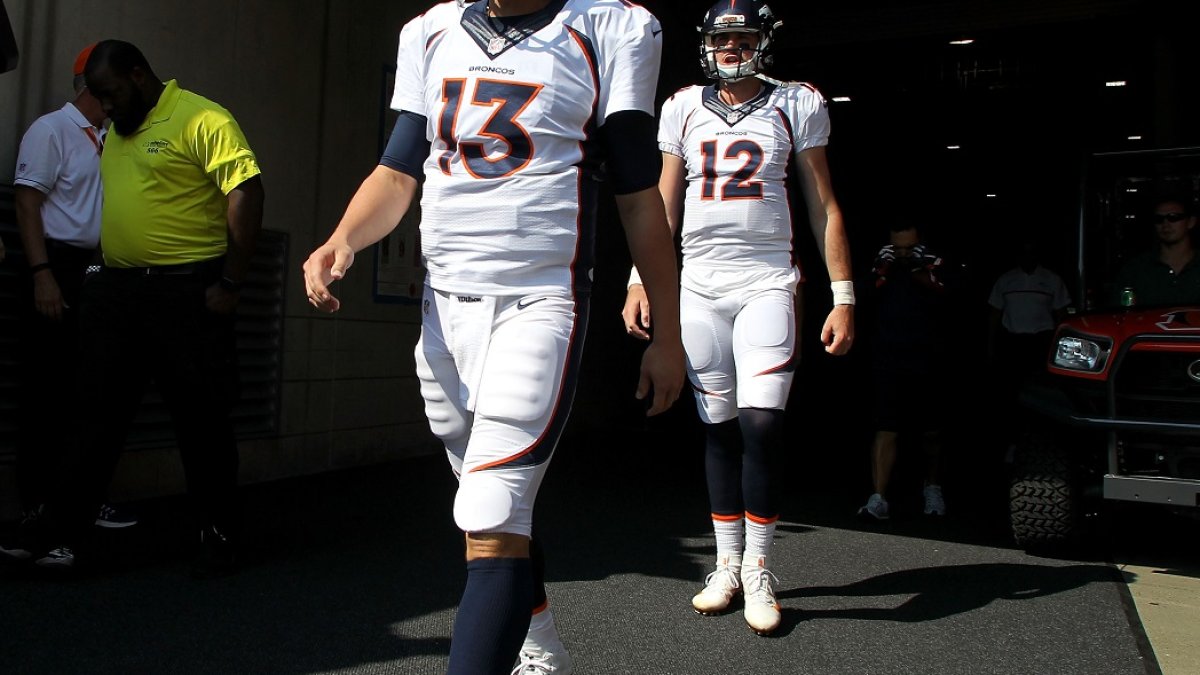The Super Bowl hangover hit Denver in 2016 and the wheels never fully got spinning. QB Trevor Siemian exceeded some expectations, but was still among the lowest-graded quarterbacks in the NFL while the defensive didn’t quite have the teeth of the 2015 version. This is still one of the most talented rosters in the NFL though with only a few glaring needs. If either Siemian or last year’s first-round pick, Paxton Lynch, establish themselves as quality starters, the Broncos could be back in the Super Bowl mix, but there are a few weaknesses the team can address in the draft.
Need: Offensive tackle
This one is glaringly obvious. If the Broncos don’t, in fact, go tackle at pick 20 I will be very surprised. They simply can’t go into 2017 with Donald Stephenson, the lowest-graded tackle in the NFL a season ago, starting once again. Other possible starters Menelik Watson and Ty Sambrailo have been early-round busts themselves meaning an infusion of talent is all too necessary.
Early-round target: Ryan Ramczyk, T, Wisconsin
Mike McCoy’s offense demands some athleticism from his tackles and Ramczyk has that in spades. He was PFF’s highest-graded college tackle in his only season of FBS football a season ago. Though not necessarily a people-mover in the run game, Ramczyk can execute every single block asked of him and is extremely consistent. Consistency would be a very nice change at the position for Denver.
Ryan Ramczyk’s 84.6 run-blocking grade led all FBS offensive tackles in 2016.https://t.co/2PBGgBZkOJ
— PFF College (@PFF_College) April 4, 2017
Mid- or late-round target: Conor McDermott, T, UCLA
If you’re drafting tackles on Day 3 hoping to plug them in as starters, you’re going to be sorely disappointed. That’s why someone like McDermott who has obvious strength concerns that need to be rectified seems like a logical late-round pick. He has most of the other tools necessary to be a starting tackle in the NFL, but needs to still spend a year or two getting stronger in the league.
Need: Defensive tackle
The once-feared defensive line has lost a good deal of its luster. They still gained pressure at among the highest rates in the NFL a season ago, but it wasn’t far and away the tops like it was in 2015. Where it maybe took the biggest step back though was in run defense. Malik Jackson was known for his pass-rushing ability, but was also a very capable run defender. His replacement Jared Crick on the other hand was not. Crick finished 108th out of 117 interior defenders in run defense.
Early-round target: Malik McDowell, DT, Michigan State
I’ve written up McDowell as one of my guys and if somehow the Broncos don’t go offensive tackle in round one, I’d be willing to wager it’s because they think they can add a game-changer along the defensive line. McDowell certainly qualifies as such. Still only 20 years old, McDowell has flashed the ability to dominate high-level opponents. His inconsistency is a concern, but when motivated, he’s one of the few players in this draft that could legitimately replace what they’ve been missing since losing Malik Jackson.
PFF scouting report: Malik McDowell, Edge, Michigan Statehttps://t.co/7aZ6zsMsJB
— PFF College (@PFF_College) March 5, 2017
Mid- or late-round target: Stevie Tu’ikolovatu, NT, USC
I cheated a bit here and used defensive tackle as a catchall term. While McDowell would play in the B and C gaps, Tu’ikolovatu is a nose tackle only. The Broncos, however, are in need of both. Tu’ikolovatu is easily the best run-stuffing nose tackle in this class. Week in and week out, college offensive linemen were physically unable of moving him off of the line of scrimmage. He offers zero as a pass-rusher, but with how much the Denver run defense took a step back in 2016 that isn’t much of a concern.
Stevie Tu’ikolovatu ranked third in the nation in run-stop percentage with 36 stops from 286 snaps in 2016.https://t.co/uoM3r3EPhE
— PFF College (@PFF_College) March 29, 2017
Need: Tight end
Quarterback would obviously qualify here as well, but the odds of them taking one early after drafting Lynch a season ago seem slim. A dynamic receiving threat at tight end could aid in the development of Lynch or Siemian and this draft class is loaded with them. Virgil Green has always been utilized more for his blocking prowess, while former third-rounder Jeff Heuerman hasn’t been able to stay healthy after an ACL injury shortened his rookie season.
Early-round target: Gerald Everett, TE, South Alabama
With the depth of this tight end class, there is little use in the Broncos addressing the position in the first round unless somehow O.J. Howard slips all the way to pick 20. If Everett is still there when the Broncos are on the clock at 51 overall in the second round, he could very well be the pick. The South Alabama tight end certainly qualifies as dynamic after he led all tight ends last year by far with 24 broken tackles on only 49 receptions. He’d be a liability as a run-blocker, but if he adds another weapon to that offense that won’t matter as much.
Gerald Everett led all tight ends with 24 forced missed tackles in 2016, nine more than any other tight end. https://t.co/7xrbVQtXFS
— PFF College (@PFF_College) March 29, 2017
Mid- or late-round target: Jonnu Smith, TE, Florida International
Like Everett, Smith is a freak athlete for the tight end position. While Everett led the nation in broken tackles, Smith was third. The Florida International tight end is also already a more polished blocker than Everett, but drop concerns will push him down some boards. Last season he dropped eight passes on 50 catchable passes.



 © 2024 PFF - all rights reserved.
© 2024 PFF - all rights reserved.